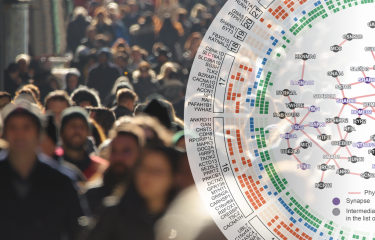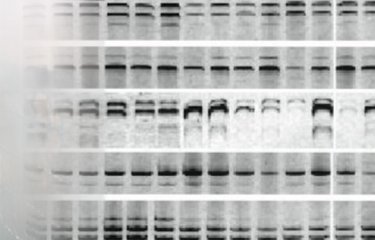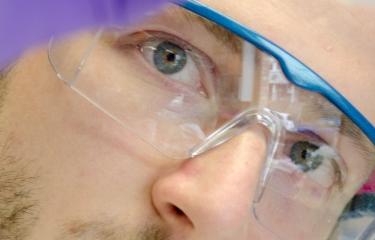Given the immense complexity of brain organization, neurobiologist Jean-Pierre Changeux has come up with a new research strategy that encourages a more comprehensive understanding of autism. This approach, outlined in the interdisciplinary journal Trends in Cognitive Sciences – which covers topics ranging from neuroscience to social sciences – combines knowledge about the disorder at several different levels: the genes involved, their expression, synapse formation, and connectivity between distant neurons in the brain (known as "long-distance" connectivity). This specific connectivity is thought to be closely linked to the ability to engage in social interaction with others. With his novel approach, Jean-Pierre Changeux is attempting to shed light on the links between genes and social awareness. We take a closer look...
The pioneering work on synaptic genes of Thomas Bourgeron and his team at the Institut Pasteur has revealed almost 400 genes predisposing to autism, which is a large number considering that in children with the disorder, it is a namely just one component of behavior that is affected, namely their ability to engage in social interaction. This is a principle characteristic of autism. "This raises questions in medical terms and also in terms of fundamental research," explains Jean-Pierre Changeux, a neurobiologist and visiting scientist in the Institut Pasteur's Department of Neuroscience. "These genetic components sometimes lead us to think that the brain's functions are entirely innate. But at the same time, we know that the human genome is actually made up of a relatively small number of genes [20,000 to 25,000], a hundred billion neurons and millions of billions of synapses." So genetics is not responsible for everything; the environment (epigenesis) influences how genes are expressed: "When you look a baby in the eyes for just 1 second, around 10 million synapses are created! And they can be altered by experience and other factors."
We know that the brain is a dynamic organ which interacts with its internal and external environment. But research aimed at furthering our understanding of the human brain and its functions based mainly on the use of information technology (experimental data from behavioral recordings or cerebral imaging, etc.) tends not to look at the molecular level, which is vital for designing drugs and understanding their mechanism of action. Research in this area is hampered by the difficulty of describing the complex organization of the brain and its development.
"We need to bring the many concepts and disparate data together within a unified framework to enable us to understand the higher functions of the brain," analyzes Jean-Pierre Changeux.
A new unified perspective in autism research
In his recent publication, the scientist proposes a deliberately simplistic conception of autism. In his view, autism is "mainly linked to a lack of connectivity between distant neurons in the brain [long-distance connectivity]. This specific connectivity is thought to influence children's social behavior at a crucial stage in their development." It is acquired during the process of brain development which occurs over a period of nearly 15 years in children, from the embryonic stage through to adolescence.
On the basis of this observation, and given the considerable variability of autistic disorders in children, Jean-Pierre Changeux suggests a new approach to help us understand the disease. His theory is to combine several levels of study that are currently often considered separately by neuroscientists:
- genes,
- transcription factors (the regulation of gene expression),
- the epigenetic impact of nerve activity (both internal and influenced by the environment) on synapse formation,
- long-distance connectivity between neurons (social behavior in children).
"These four levels of structural organization are interlinked and inter-regulated during the growth and development of the brain. They can help us gradually establish links between genes and social awareness."
To better understand brain dynamics
So how does this new unified perspective proposed by the scientist change things? "It means that we avoid looking at things in a way that is too narrow or restrictive," continues Jean-Pierre Changeux. "Childhood disorders are not just about impaired genes. We know, for example, that behavioral therapies can have an impact on children." It goes without saying that genetics remains an important element in autism, and "we can envisage the development of drugs to target the transcription factors involved." There is also potential for new computer modeling approaches incorporating the dynamics of brain development.
All these avenues of research are provisionally based on the four levels of brain organization (genes, transcription factors, epigenetics, and long-distance connectivity) explored by Jean-Pierre Changeux, but "others may be necessary," he explains. "This approach needs to be discussed and tested by experience."
Source
Climbing brain levels of organization from genes to consciousness, Trends in Cognitive Sciences, february 3rd, 2017.
Jean-Pierre Changeux1
1: Collège de France, CNRS UMR 3571, & Institut Pasteur, Département de Neuroscience, F-75015 Paris, France.









